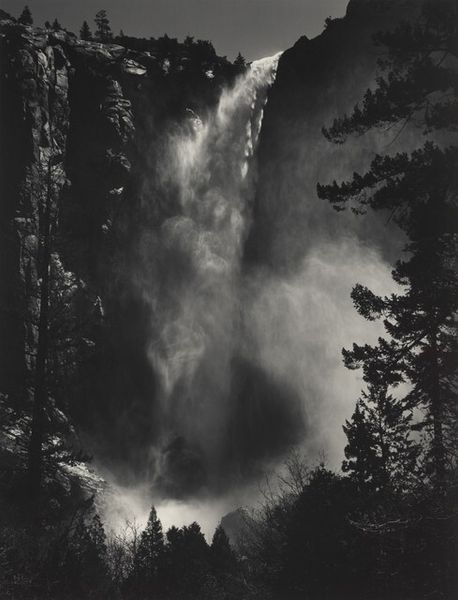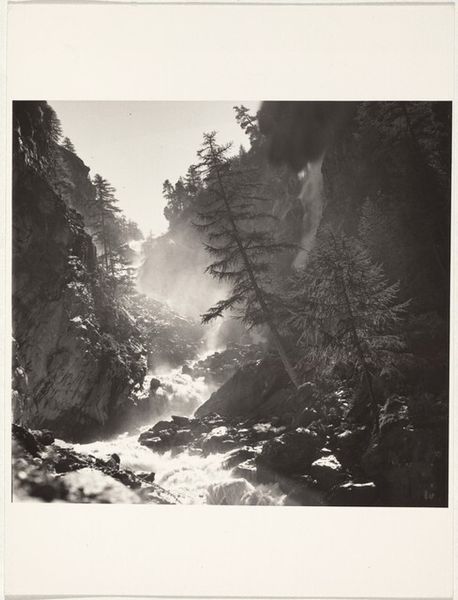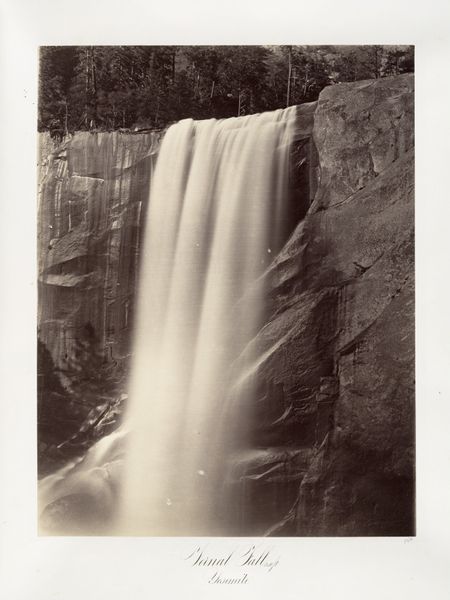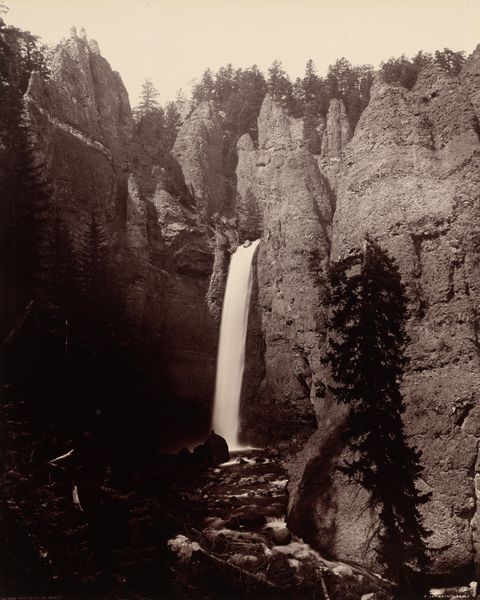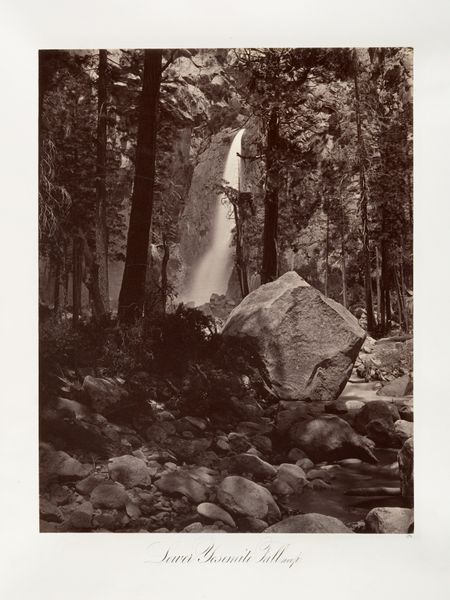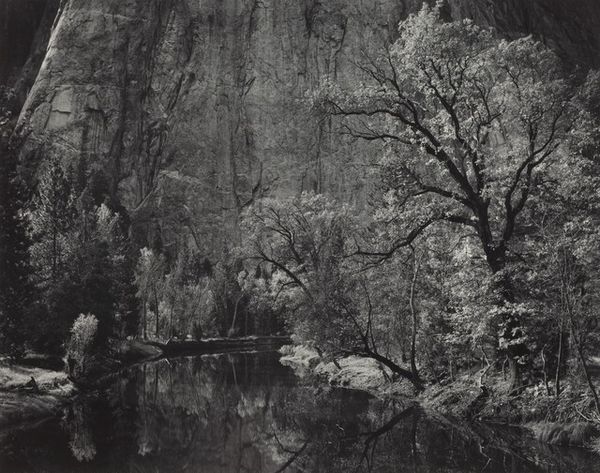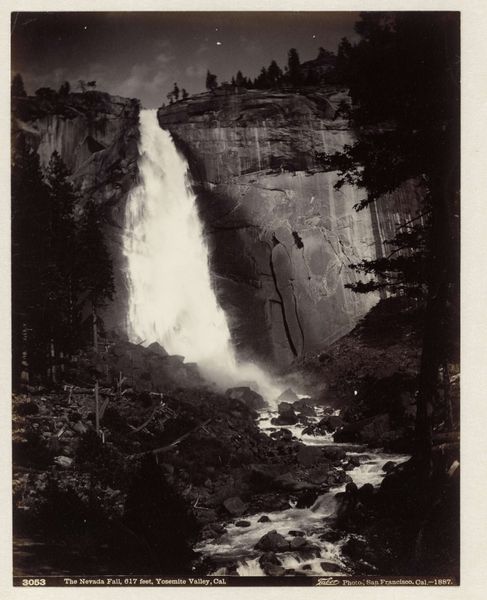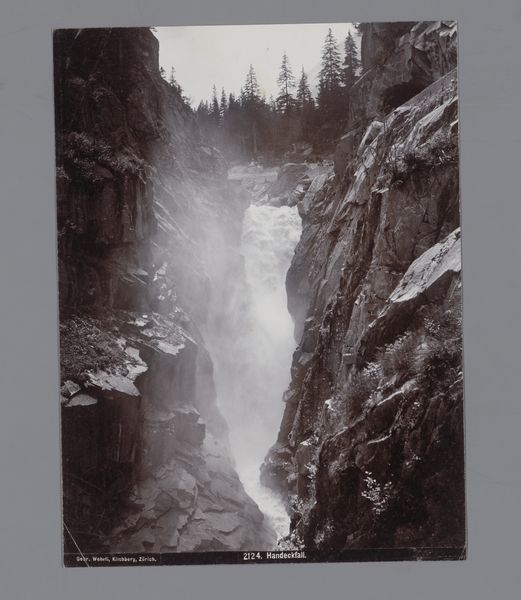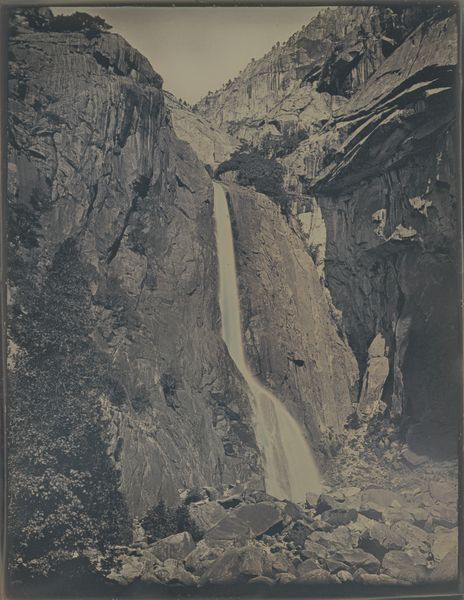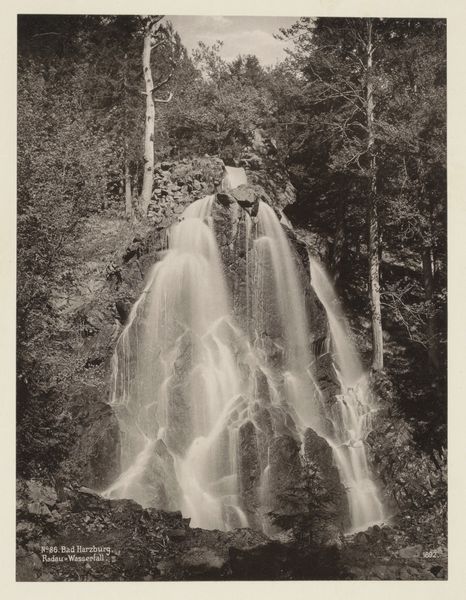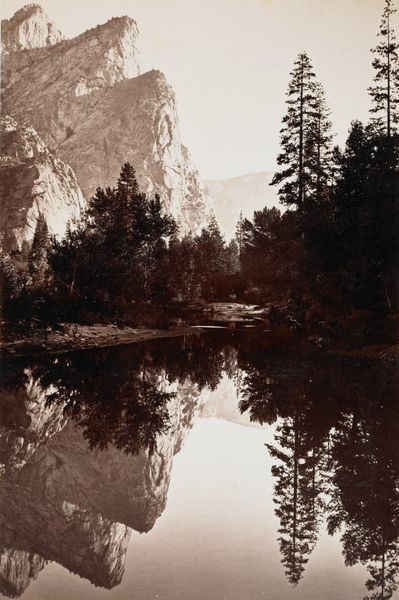
Dimensions: overall: 38.2 x 49.5 cm (15 1/16 x 19 1/2 in.)
Copyright: National Gallery of Art: CC0 1.0
Curator: Ansel Adams created "Vernal Fall, Yosemite Valley, California" sometime between 1948 and 1981. This piece is a gelatin-silver print. What is your immediate impression? Editor: Stark. It's such a dramatic scene captured with so much contrast—the blacks are incredibly deep, making the waterfall itself seem almost blindingly bright. The composition, with the dark, rocky foreground, definitely builds up the visual power of the waterfall. Curator: Adams was a champion for the environment, so his depictions of these iconic landscapes go beyond the visual; his artistic agenda becomes inextricably tied to issues surrounding land rights and wilderness preservation, reflecting an awareness of indigenous histories and environmental justice. Editor: Absolutely. You can see that connection between the raw materials—the water, the rock—and his photographic process. The way he's manipulated the silver gelatin process to capture the texture of the rock and the movement of the water seems like an effort to understand and highlight its material components. It's not just an image; it's about the act of experiencing and recording these materials. Curator: Precisely! His work actively contested narratives of manifest destiny through its visual sovereignty, inviting reflection on land exploitation in a time of considerable demographic and ideological change in twentieth-century America. These images promoted environmental preservation while confronting difficult dialogues of place, race, and power. Editor: And when we look at that through a material lens, it makes you consider the physical labor and resources required to create this image—the mining of the silver, the manufacturing of the paper. Every photograph carries that entire weight within the frame. Even though Adams created so many images of similar natural vistas, his ability to engage materials in ways that capture nature remains highly resonant. Curator: Adams encourages us to question our relationship to nature, reminding us of our obligations toward ecological stewardship as he reframes nature as something to preserve, not simply conquer. Editor: It definitely inspires a re-evaluation of how we use, process, and ultimately value the raw resources that make our world.
Comments
No comments
Be the first to comment and join the conversation on the ultimate creative platform.
